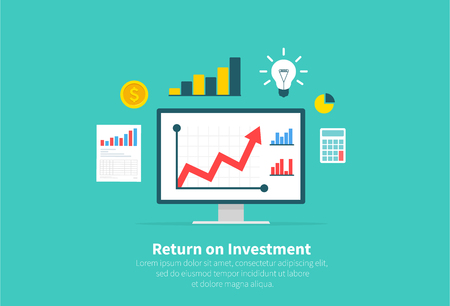1. Introduction to Risk Tolerance and Risk Capacity
When it comes to building a long-term investment strategy in the United States, understanding the difference between risk tolerance and risk capacity is critical. Both concepts play a central role in how Americans approach their financial planning, yet they are often misunderstood or used interchangeably. Risk tolerance refers to your personal comfort level with market fluctuations and potential losses, while risk capacity measures your actual financial ability to withstand those losses without jeopardizing your goals. Clarifying this distinction is essential for aligning your investment choices with both your psychological profile and your tangible financial needs. In an environment shaped by diverse economic cycles, fluctuating markets, and unique American retirement vehicles like 401(k)s and IRAs, recognizing where you stand on both fronts ensures that your portfolio remains resilient and tailored to your specific situation. This nuanced approach helps prevent emotional decision-making during market volatility and supports a disciplined, data-driven path toward achieving long-term financial objectives.
2. Assessing Your Personal Risk Profile
Understanding your risk profile is a foundational step in aligning your investments with your long-term financial goals. In the U.S., investors commonly use a combination of self-assessment tools, professional guidance, and real-world scenarios to gauge both risk tolerance and risk capacity. These two concepts may sound similar but are distinct: risk tolerance reflects your emotional comfort with market volatility, while risk capacity measures your actual financial ability to absorb losses without jeopardizing your objectives.
Common Methods for Evaluating Risk Tolerance and Capacity
Financial professionals and online platforms in the U.S. typically deploy structured questionnaires and scenario-based assessments to help investors gain clarity on their personal risk profiles. Here’s a breakdown of popular tools and approaches:
| Method | Description | Typical Use Case |
|---|---|---|
| Risk Tolerance Questionnaires | Standardized sets of questions focusing on investor reactions to hypothetical market events and investment loss scenarios. | Onboarding new clients or DIY investors using robo-advisors. |
| Monte Carlo Simulations | Computer-based models that simulate thousands of potential market outcomes to test portfolio resilience under stress. | Advanced planning sessions with financial advisors. |
| Financial Planning Software | Comprehensive digital tools integrating risk assessment, cash flow analysis, and goal tracking. | Ongoing portfolio reviews and holistic wealth management. |
| Practical Scenarios | Real-life “what-if” exercises (e.g., sudden job loss or market crash) to reveal true comfort levels and financial flexibility. | Annual review meetings or major life event planning. |
Sample Questions Used in U.S. Risk Assessments
While tools vary by provider, typical questions include:
- If your $100,000 portfolio lost 20% in one year, how would you react?
- How many years do you expect before needing to draw from your investments?
- What is more important: maximizing gains or minimizing losses?
- If the market dropped sharply tomorrow, what action would you take?
The Importance of Regular Reassessment
Your risk profile isn’t static—it can evolve as your financial situation, goals, or even psychology changes over time. American investors are encouraged to revisit these assessments annually or after significant life events (such as marriage, home purchase, or retirement). By leveraging these tailored tools and honest self-reflection, you can ensure that your investment strategy remains properly aligned with both your willingness and ability to take on risk—ultimately supporting a sustainable long-term allocation plan.

3. How Risk Factors Shape Your Investment Strategy
When it comes to aligning your investment portfolio with your financial goals, understanding how personal and economic factors influence both your risk tolerance and risk capacity is essential for American investors. These factors can determine not only how much risk you are comfortable taking (risk tolerance), but also how much risk you are financially able to handle without jeopardizing your future (risk capacity).
Age and Investment Horizons
Your age is one of the most critical variables shaping your investment strategy. Younger investors typically have a higher risk capacity because they have more time to recover from market downturns, allowing them to pursue long-term growth through equities or aggressive asset allocations. Conversely, those nearing retirement often shift toward lower-risk assets like bonds or cash equivalents to preserve capital, reflecting both a reduced risk capacity and, often, a lower risk tolerance.
Income Stability and Career Security
Steady income streams—such as a reliable salary or established business—directly impact your ability to withstand financial shocks. Americans with stable jobs in resilient industries may find themselves more comfortable investing in volatile assets, knowing their paycheck can buffer against short-term losses. Meanwhile, individuals with irregular or uncertain income—think freelancers or those in cyclical sectors—may need a more conservative approach, prioritizing liquidity and capital preservation over high returns.
Family Obligations and Life Stages
Family commitments play a significant role in investment decision-making. Parents with young children or dependents often favor lower-risk investments due to immediate financial responsibilities like education costs, healthcare, and daily living expenses. Single individuals or couples without dependents might be able to tolerate higher volatility in exchange for potential long-term gains. Additionally, major life events such as marriage, buying a home, or planning for college tuition can shift both your willingness and ability to take risks.
Economic Cycles and Market Conditions
The broader economic environment also affects American investors’ appetite for risk. During periods of strong economic growth and low unemployment, optimism tends to rise and investors may be more willing to allocate funds toward riskier asset classes. In contrast, during recessions or times of high inflation, even those with high risk tolerance may reconsider their exposure to equities or real estate, opting instead for safer havens like Treasury bonds or money market funds.
Aligning Personal Factors with Portfolio Construction
By carefully considering these key factors—age, income stability, family obligations, and the economic cycle—you can better align your portfolio’s risk profile with both your comfort level (risk tolerance) and what you can truly afford to lose (risk capacity). This data-driven approach ensures that your investment strategy remains resilient across different life stages and market conditions while keeping you on track toward achieving your long-term financial goals.
4. Aligning Investment Choices with Financial Goals
When crafting a long-term investment plan, it is crucial to select the right accounts and products that align with both your risk tolerance and risk capacity, as well as your specific financial objectives. In the U.S., common investment vehicles include 401(k)s, IRAs, and taxable brokerage accounts. Each offers distinct advantages depending on whether your goals are short-term or long-term, and on how much risk you can take or are comfortable taking.
Matching Investment Products to Your Risk Profile
Your risk tolerance refers to how much market volatility you are psychologically prepared to handle. Risk capacity, on the other hand, is about how much loss you can absorb without jeopardizing your financial future. By understanding both, you can choose investment products that fit your unique situation.
Investment Product Suitability Matrix
| Product Type | Best for (Goal Timeline) | Risk Tolerance Fit | Risk Capacity Considerations |
|---|---|---|---|
| 401(k) | Long-Term (Retirement) | Medium-High (equities-heavy) or Low (bond-heavy), adjustable by fund selection | High if you have decades until retirement; lower if nearing retirement age |
| Traditional/Roth IRA | Long-Term (Retirement/Supplemental Savings) | Flexible—can choose aggressive or conservative investments within account | High for younger investors; moderate for those closer to retirement |
| Taxable Brokerage Account | Short/Medium/Long-Term (Flexible Access) | Very Flexible—can match any risk profile via asset selection | Dependent on liquidity needs; suitable for those with higher risk capacity or near-term goals requiring access to funds |
Selecting Based on U.S. Financial Objectives
If your primary goal is long-term wealth building—such as saving for retirement—tax-advantaged accounts like 401(k)s and IRAs are usually ideal due to their growth potential and tax benefits. These accounts also discourage frequent withdrawals, aligning naturally with high risk capacity and longer time horizons.
Short-Term vs. Long-Term Goal Alignment:
- Short-Term Goals (1–5 years): Use taxable brokerage accounts with lower-risk assets such as high-yield savings, CDs, or short-term bond funds. Minimize stock exposure to reduce volatility.
- Long-Term Goals (10+ years): Prioritize 401(k)s and IRAs with a greater allocation toward equities or diversified stock funds, especially if you have high risk capacity due to a long timeline.
- Mid-Term Goals (5–10 years): Blend approaches: use both brokerage accounts and IRAs with a balanced mix of stocks and bonds based on your comfort level.
The key takeaway is that the proper alignment of account type, investment product, risk tolerance, and risk capacity will help ensure you stay on track toward your U.S.-specific financial goals—whether that’s buying a home in five years or retiring comfortably in thirty.
5. Real-World Examples and Case Studies
To truly understand the importance of aligning risk tolerance and risk capacity with your investment strategy, let’s look at a few real-world American case studies—some demonstrating successful alignment, others highlighting common pitfalls.
Case Study 1: The Young Tech Professional – Successful Alignment
Meet Emily, a 28-year-old software engineer in San Francisco earning a strong income with minimal debt. Emily’s risk tolerance is high: she’s comfortable with market fluctuations and has a long investment horizon before retirement. Her risk capacity is also robust given her steady income and lack of financial dependents. Working with a financial advisor, Emily chooses an aggressive portfolio, primarily invested in U.S. equities and growth-oriented index funds. When the market dips during a recession, Emily remains calm, continues her dollar-cost averaging contributions, and ultimately benefits from the subsequent recovery. Her willingness and ability to take on risk were both high—and her strategy paid off over time.
Case Study 2: The Pre-Retiree Couple – Mismatched Strategy
John and Lisa, both 60, are preparing for retirement in five years. While John is comfortable with volatility (high risk tolerance), their risk capacity is lower because they will soon rely on their investments for income and don’t have time to recover from major losses. Despite this mismatch, John convinces Lisa to maintain a heavy allocation to stocks. Unfortunately, during a market downturn, their portfolio loses significant value, jeopardizing their retirement timeline. Their high-risk approach didn’t match their actual financial situation—highlighting the dangers of ignoring risk capacity.
Case Study 3: The Small Business Owner – Conservative by Necessity
Tony owns a small family restaurant in Texas. After surviving the COVID-19 pandemic with some government aid and personal savings, his business cash flow is still unpredictable. Although Tony would like higher returns (moderate risk tolerance), his risk capacity is low due to inconsistent income and ongoing business expenses. He opts for a conservative portfolio focusing on bonds and short-term instruments to preserve capital and liquidity. This decision allows him to weather business ups and downs without tapping into his investment principal—a prudent choice aligned with his current financial reality.
Key Takeaways from These Cases
- Successful alignment occurs when investors honestly assess both their comfort with risk and their actual financial flexibility.
- Mismatches between risk profile and strategy can lead to emotional stress or forced selling at the worst possible times.
Long-Term Perspective Matters
The most successful American investors are those who revisit their risk tolerance and capacity regularly—adjusting as life circumstances change—to ensure their investment strategy supports their ultimate financial goals.
6. Adapting Over Time: Monitoring and Adjusting Your Risk Profile
Risk tolerance and risk capacity are not static characteristics—they evolve as your life circumstances, financial situation, and the broader U.S. economic landscape change. Regularly reassessing these factors is essential for long-term investment success. Major milestones such as getting married, buying a home, having children, or approaching retirement can all shift your financial priorities and alter both how much risk you’re comfortable taking (tolerance) and how much risk you can realistically afford (capacity). In addition, changes in the American economy—such as rising inflation, interest rate shifts by the Federal Reserve, or a downturn in the stock market—can significantly impact your portfolio’s value and your ability to withstand losses.
By consistently monitoring your risk profile, you ensure that your investment strategy remains aligned with your goals. For example, if you experience a significant salary increase or pay off major debts, your capacity for risk may rise, allowing for more aggressive growth investments. Conversely, a job loss or unexpected medical expense might require a more conservative approach. Tools like annual financial reviews or working with a certified financial planner familiar with U.S. markets can help identify when adjustments are necessary.
Ultimately, staying proactive about reassessing your risk tolerance and capacity helps you avoid common pitfalls—like holding onto overly risky assets during volatile periods or missing out on growth opportunities when you could afford more exposure. By adapting over time, you maximize the potential for achieving your financial goals while minimizing unnecessary stress during inevitable life and market changes.
7. Action Steps and Resources for U.S. Investors
Now that you understand the difference between risk tolerance and risk capacity, it’s time to translate this knowledge into action. Aligning your investments with both your personal risk profile and financial objectives is crucial for long-term success. Here are some practical steps, tools, and trusted American resources to help you get started:
Assess Your Risk Profile
1. Take a Risk Assessment Quiz: Use reputable tools like Vanguard’s Investor Questionnaire or Charles Schwab’s Risk Profile Quiz to clarify your risk tolerance and capacity. These quizzes factor in your financial situation, investment timeline, and comfort with market fluctuations.
Set Clear Financial Goals
2. Define Your Objectives: Write down your short-term, medium-term, and long-term goals—such as buying a home, funding education, or retirement. Use the SMART (Specific, Measurable, Achievable, Relevant, Time-bound) framework to make each goal actionable.
Create an Investment Plan
3. Match Investments to Your Profile: Align asset allocation (stocks, bonds, real estate, cash) with both your risk tolerance and capacity. If you have a high risk capacity but low risk tolerance, consider a balanced approach using diversified mutual funds or target-date funds.
Leverage U.S.-Based Financial Tools
4. Utilize Online Calculators: Tools like Fidelity’s Retirement Score or Bankrate’s Investment Calculator can help project how different allocations may impact your ability to meet goals.
Seek Professional Guidance
5. Work with Certified Advisors: Consider consulting a CFP® (Certified Financial Planner) or a fiduciary advisor found through the National Association of Personal Financial Advisors (NAPFA). They’re required to act in your best interest and can tailor strategies based on American tax laws and retirement accounts.
Monitor and Adjust Regularly
6. Schedule Annual Reviews: Life changes—so should your investment strategy. Use digital platforms like Personal Capital or Morningstar Portfolio Manager to track performance and rebalance as needed.
Trusted U.S. Financial Resources
– Investor.gov: SEC’s investor education site
– FINRA Investor Education: Reliable regulatory guidance
– Charles Schwab Learning Center: Free guides and webinars
– Vanguard Investment Resources: Research and planning tools
Final Thoughts
The journey toward aligning your investments with both your risk profile and financial goals requires regular evaluation, discipline, and informed decision-making. By leveraging these U.S.-focused resources and following the outlined action steps, you’ll be better equipped to navigate market ups and downs while staying on track for long-term financial success.


